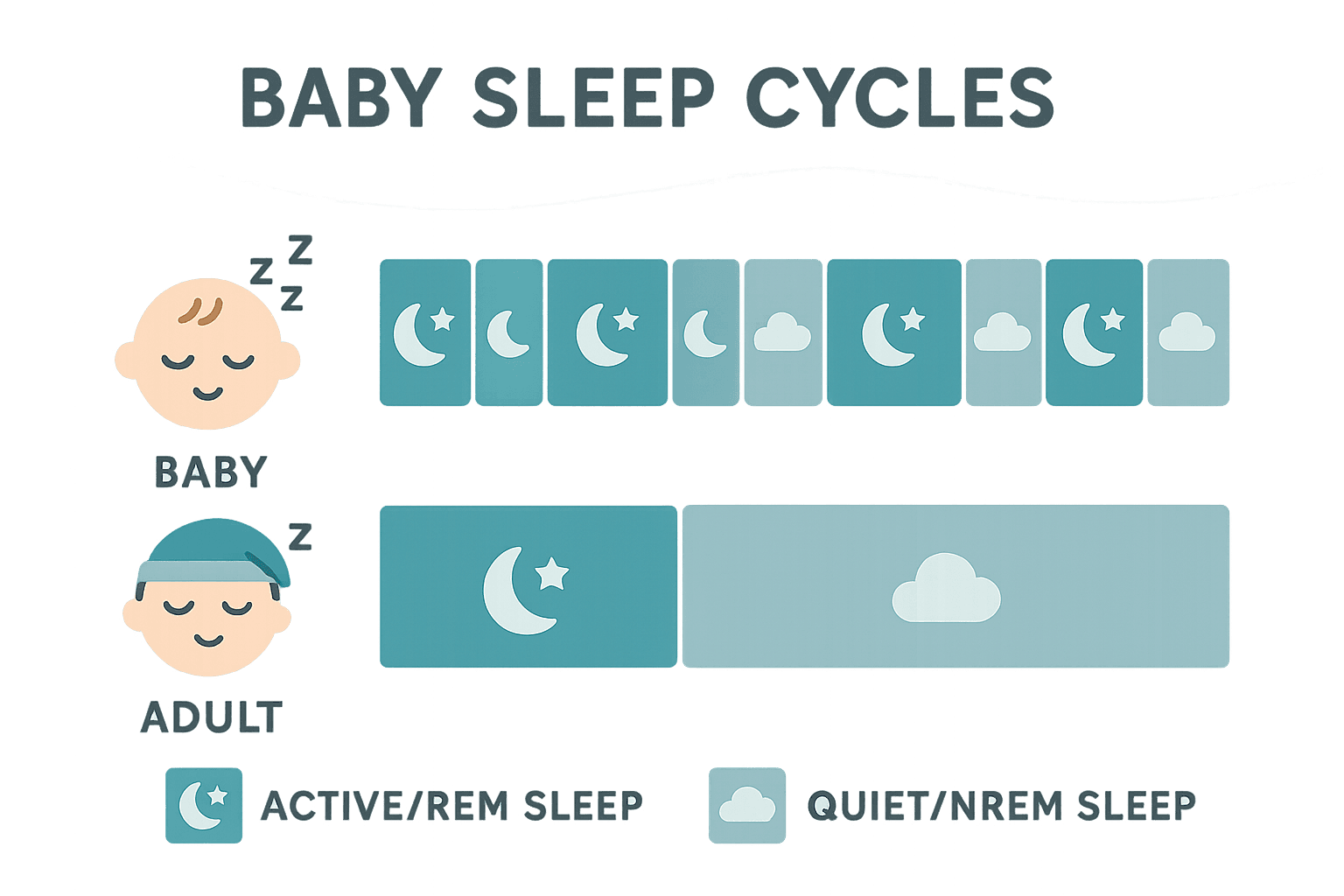
Baby Sleep Cycles Unlocked: Why Your Newborn Sleeps Like *That*
Ever wonder why newborn sleep is so chaotic? We break down the science of baby sleep cycles (REM vs. non-REM) in a way that actually makes sense for tired parents.
Okay, picture this: You finally get your newborn to sleep. You tiptoe away, holding your breath, dreaming of maybe, just maybe, getting 45 minutes to yourself. Then, BAM! Eyes pop open. Or maybe they just twitch, grunt, and seem almost awake before drifting off again. What is even happening?!
Welcome to the wild, weird world of baby sleep cycles. If you feel like your baby's sleep patterns make absolutely no sense compared to yours, you're right! They're totally different. But understanding the why behind it all was a game-changer for my sanity as a parent. It helped me stop thinking "Why won't my baby sleep properly?" and start thinking "Ah, okay, this is what their brain is doing right now."
So, let's ditch the confusing jargon and break down the science of baby sleep in a way that actually helps.
Adult Sleep vs. Baby Sleep: Not Even Close!
As adults, we cycle through different sleep stages roughly every 90-120 minutes. We start light, drift into deep sleep (where the real restorative magic happens), pop into REM (Rapid Eye Movement) sleep for dreaming, and then cycle back.
Newborns? Their sleep cycle is way shorter – like 45-60 minutes long. And here's the kicker: they spend about half their sleep time in that active, twitchy, grunty REM sleep. Adults only spend about 20-25% of their sleep dreaming.
Why so much REM sleep for babies? Because their brains are EXPLODING with growth! REM sleep is crucial for brain development, learning, and processing all the new things they experience every single day. It's like their brain is running intense software updates while they snooze.
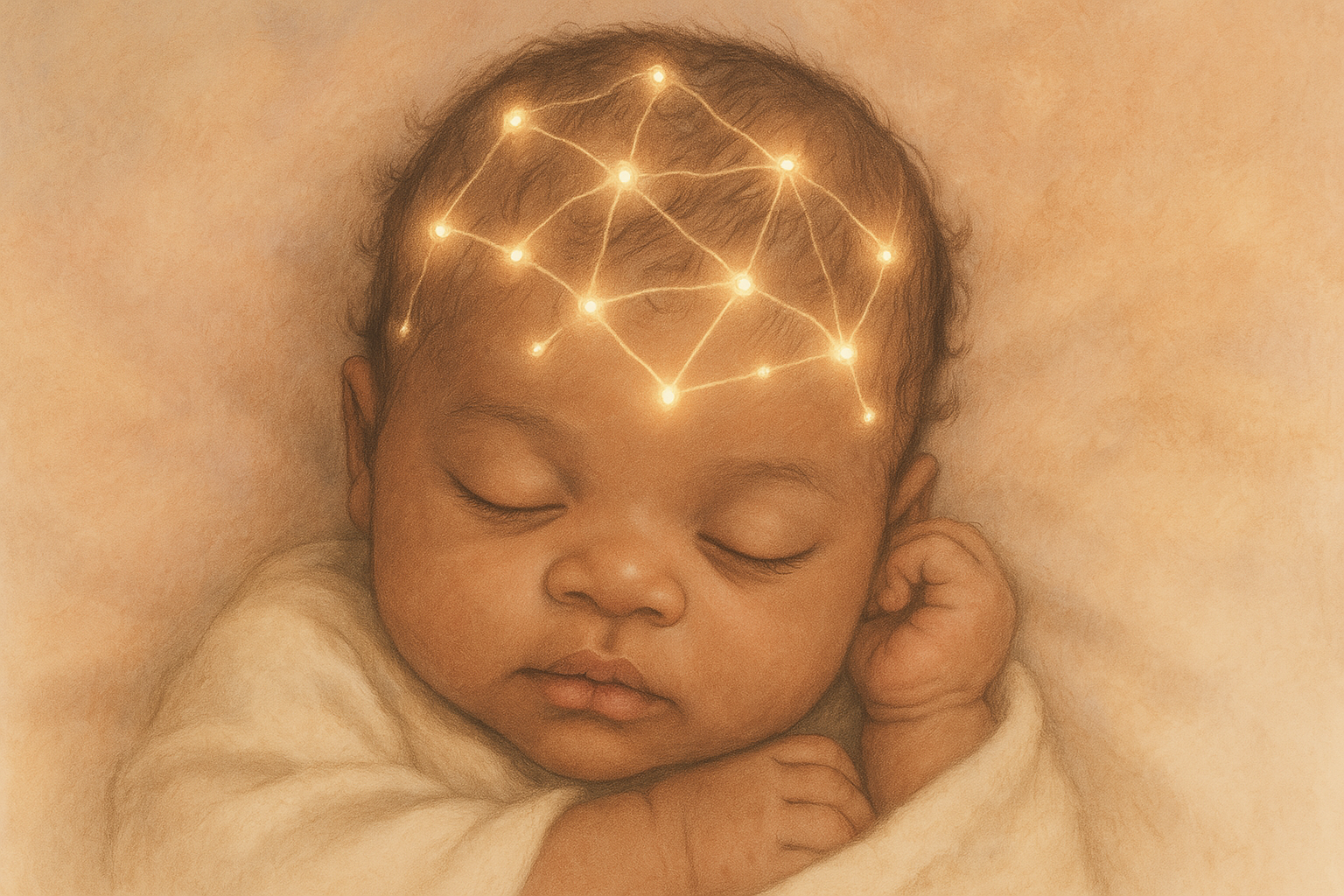
The Two Big Baby Sleep States: Active vs. Quiet
Instead of the multiple stages adults have, think of baby sleep primarily in two modes:
-
Active Sleep (REM): This is where the action is! You'll see:
- Fluttering eyelids (even opening briefly)
- Twitching fingers and toes
- Smiling, grimacing, or sucking movements
- Irregular, faster breathing
- Grunts, sighs, little whimpers
This looks a lot like they're about to wake up, right? This is where so many parents (myself included!) make the mistake of rushing in too soon. Often, they're just transitioning and will settle back down if left alone for a minute. It's like their brain is buzzing!
-
Quiet Sleep (Non-REM / Deep Sleep): This is the peaceful, still sleep we often expect. You'll see:
- Very little movement, maybe occasional sighs
- Deep, regular breathing
- A totally relaxed body
This is the more restorative sleep state, but newborns spend less time here initially compared to active sleep. As they get older, the proportion of quiet sleep increases.
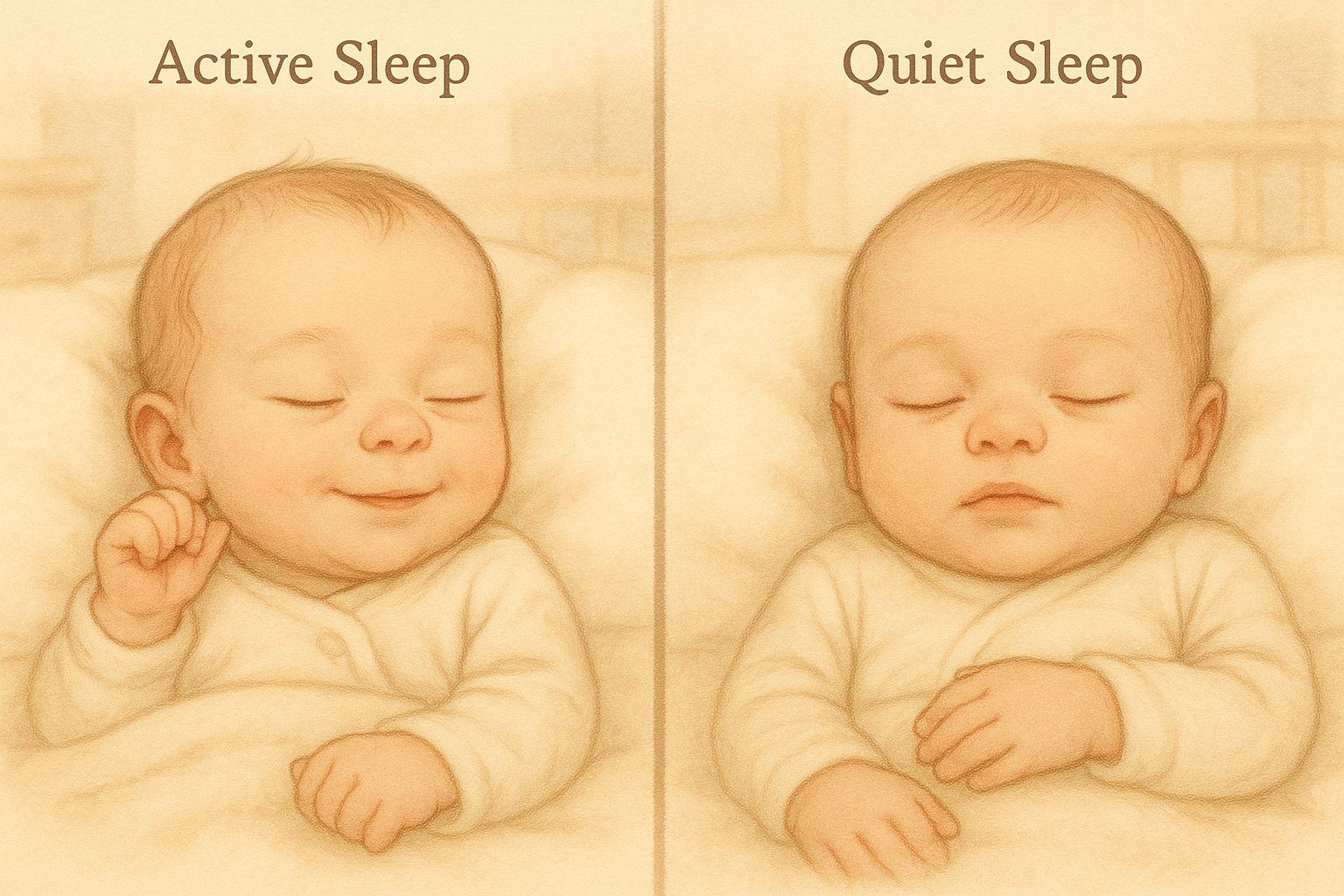
The Sleep Cycle Journey: Putting It Together
So, a typical newborn sleep cycle might look something like this:
- Drowsy: Eyes get heavy, maybe some yawning.
- Enters Active Sleep (REM): Falls asleep but stays twitchy, grunty, maybe smiles. Eyelids flutter. Breathing is irregular. (Lasts maybe 20-30 mins).
- Transitions (The Danger Zone!): A brief period where they might stir, grunt more, or even open their eyes briefly as they shift gears. Resist the urge to interfere immediately!
- Enters Quiet Sleep (Non-REM): Breathing becomes deep and regular. Body is still. This is deep, restorative sleep. (Lasts maybe 20-30 mins).
- Transitions Again: Another brief arousal period as the cycle ends. They might wake up fully (often because they're hungry!) or potentially link into another sleep cycle if conditions are right.
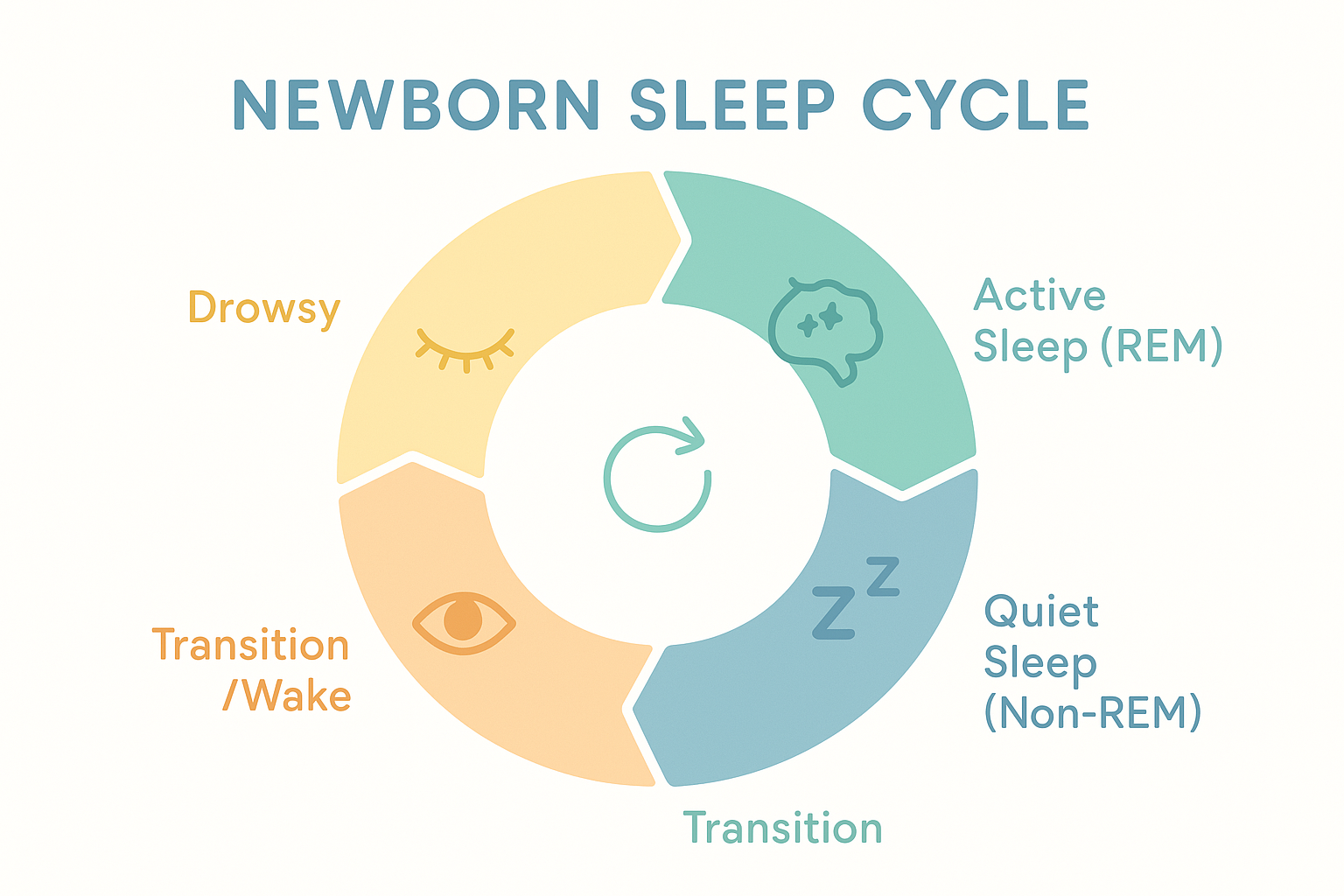
Why This Matters (Besides Making You Feel Less Crazy)
Understanding these cycles helps explain SO much:
- Why they wake so often: Short cycles + needing to eat frequently = lots of wake-ups. It's normal!
- Why they're noisy sleepers: All that REM sleep means lots of grunts and twitches that don't necessarily mean they're uncomfortable or waking up. Using tools like white noise machines can sometimes help mask external sounds during these lighter sleep phases.
- Why you shouldn't rush in: Intervening during those active sleep twitches or brief transition arousals can accidentally wake them fully when they might have settled back down on their own. (Learning the "Pause" was a game-changer for me!)
- Why naps can be short: Sometimes they wake after just one 45-60 minute cycle, especially in the early days. Linking sleep cycles is a skill that develops over time. Finding gentle sleep solutions can sometimes help encourage longer naps.
As They Grow: The Evolution of Sleep
The good news? It changes! As your baby gets older (around 3-4 months is often a big shift, sometimes called the "4-month sleep regression" because things can get temporarily chaotic), their sleep cycles start to mature:
- Cycles get longer.
- They start entering sleep through quiet sleep first, like adults.
- The proportion of deep, quiet sleep increases.
- They get better at linking sleep cycles together, leading to potentially longer stretches of sleep (hallelujah!).
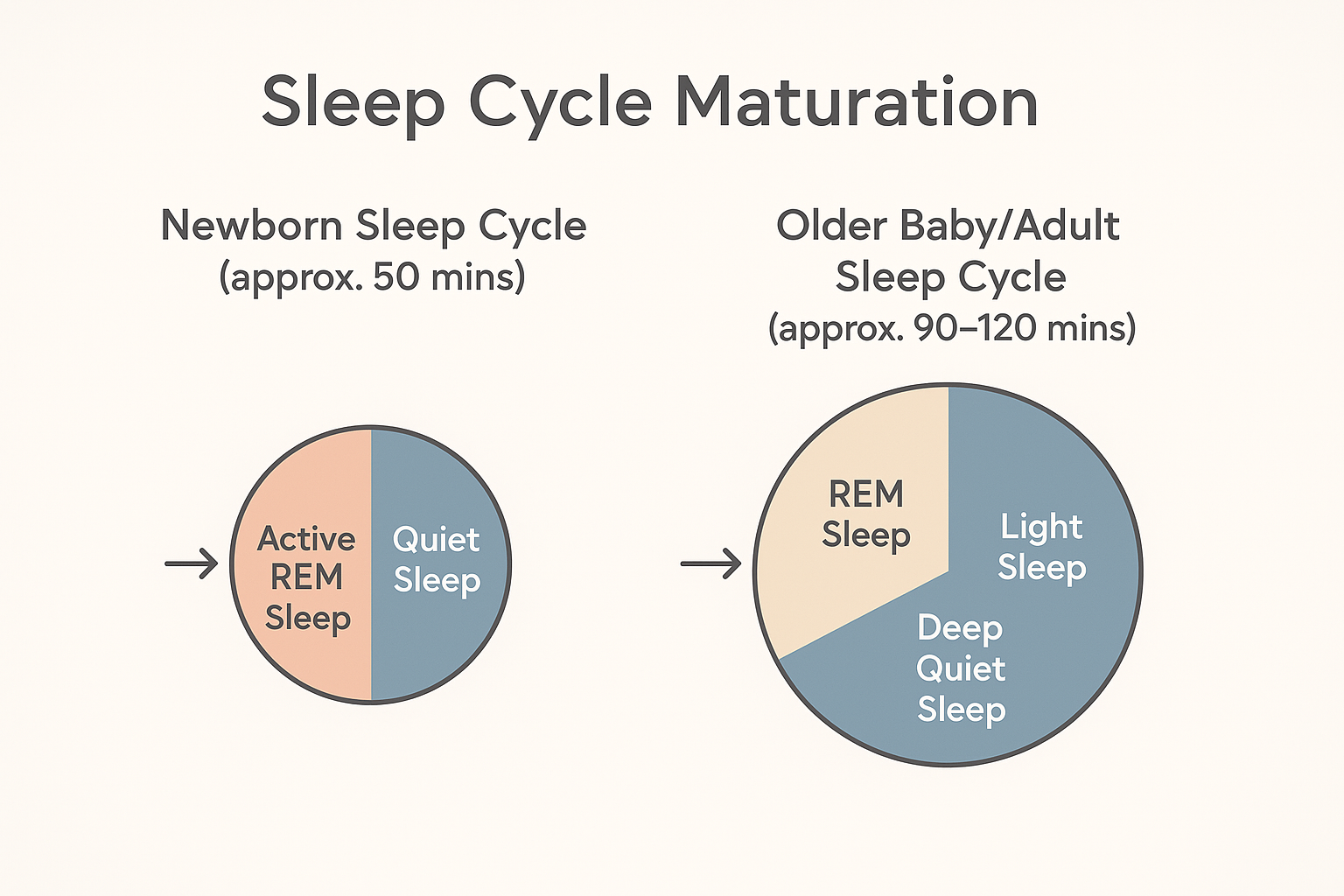
Riding the Sleep Cycle Wave
So, next time you see your sleeping baby twitching, smiling, or grunting, take a breath. Remember their amazing brain is hard at work! Understanding their unique sleep cycles doesn't magically make them sleep through the night, but it can help you respond more appropriately, feel less anxious about every little noise, and appreciate the incredible development happening even while they rest.
You've got this!

Maya Singh
Sleep Science & Gentle Methods
Maya delves into the science behind baby sleep and advocates for gentle, responsive parenting methods. With a background in child development, she offers evidence-based advice and practical tips for understanding and nurturing healthy sleep habits.
More articles by Maya Singh